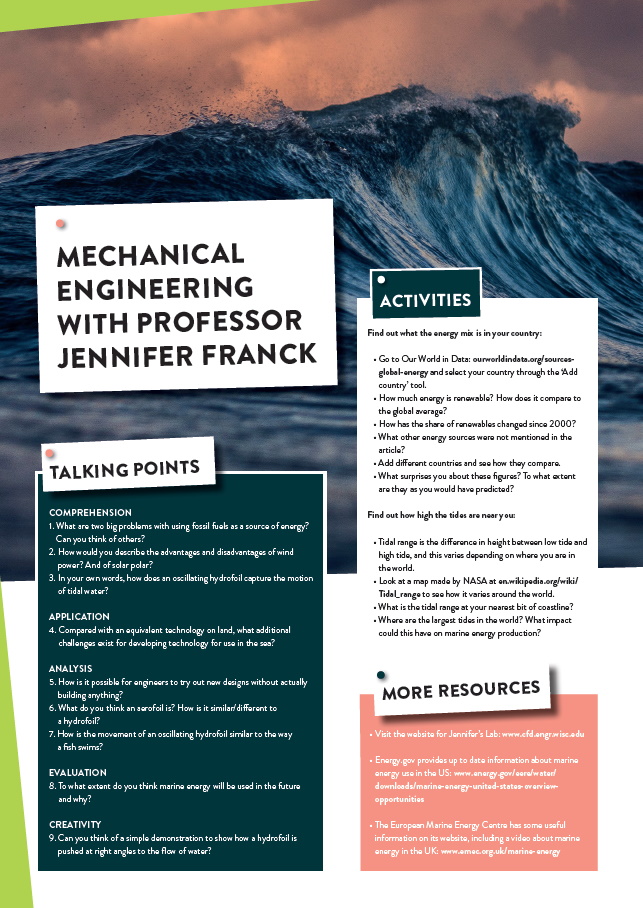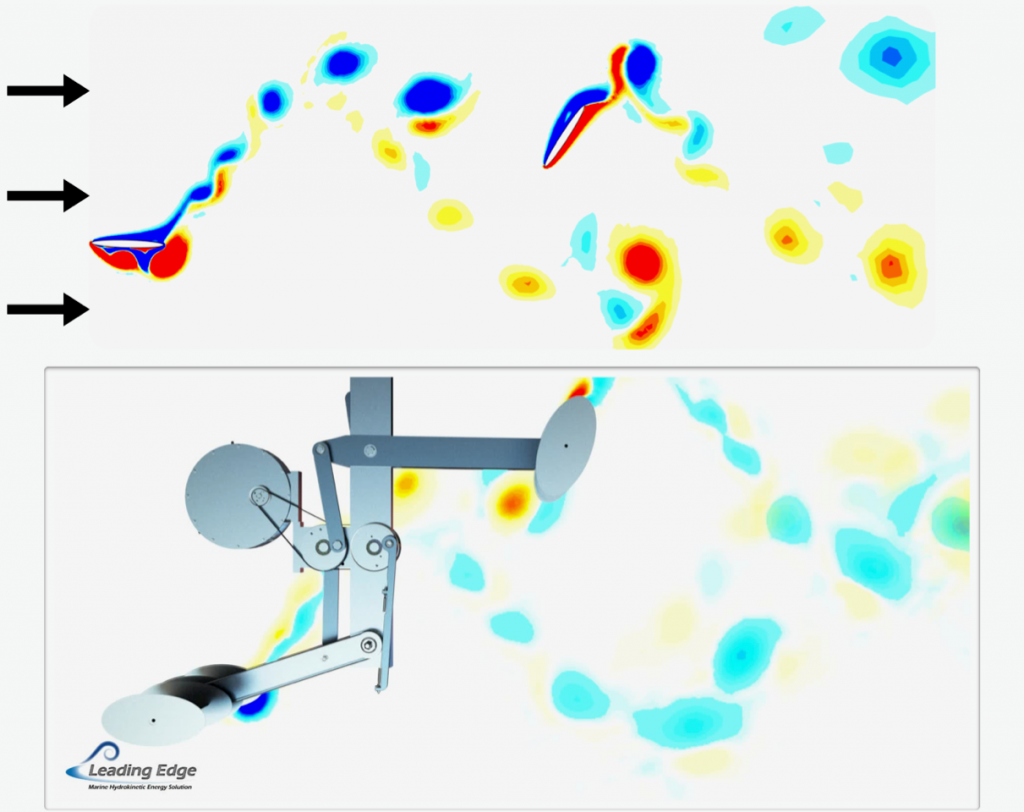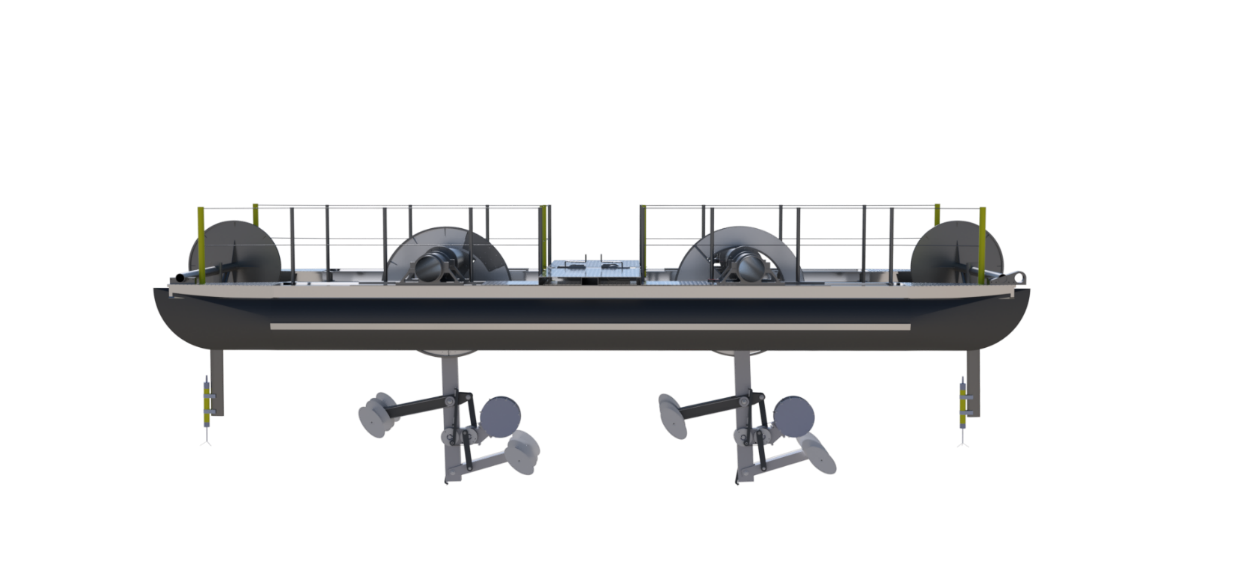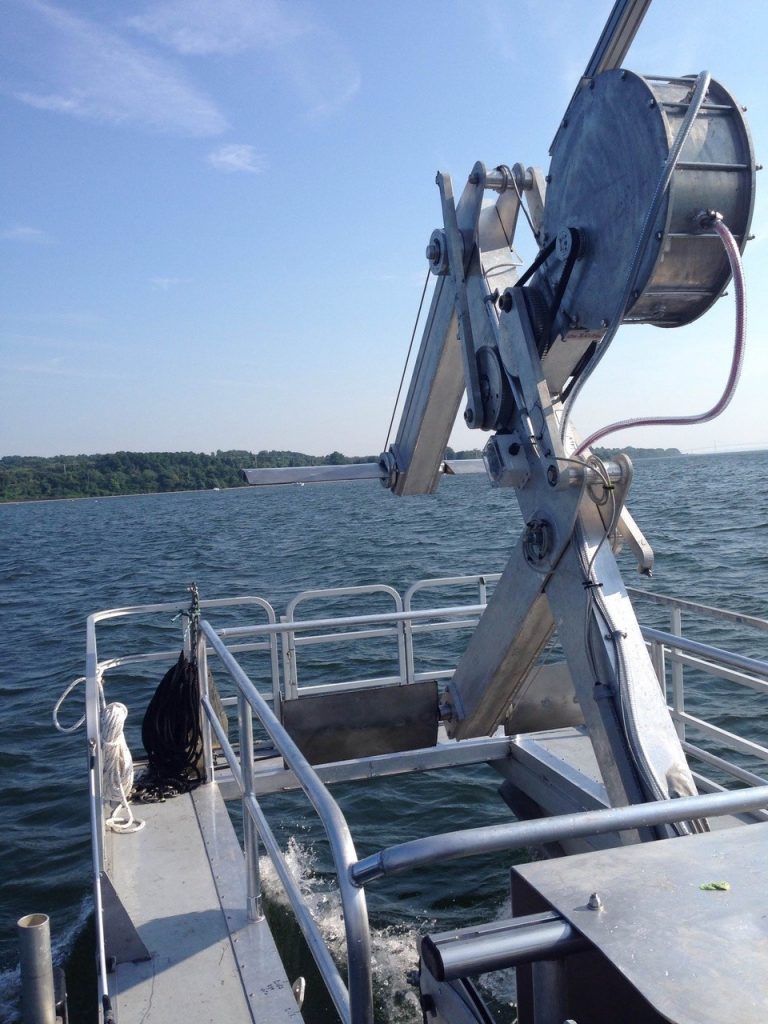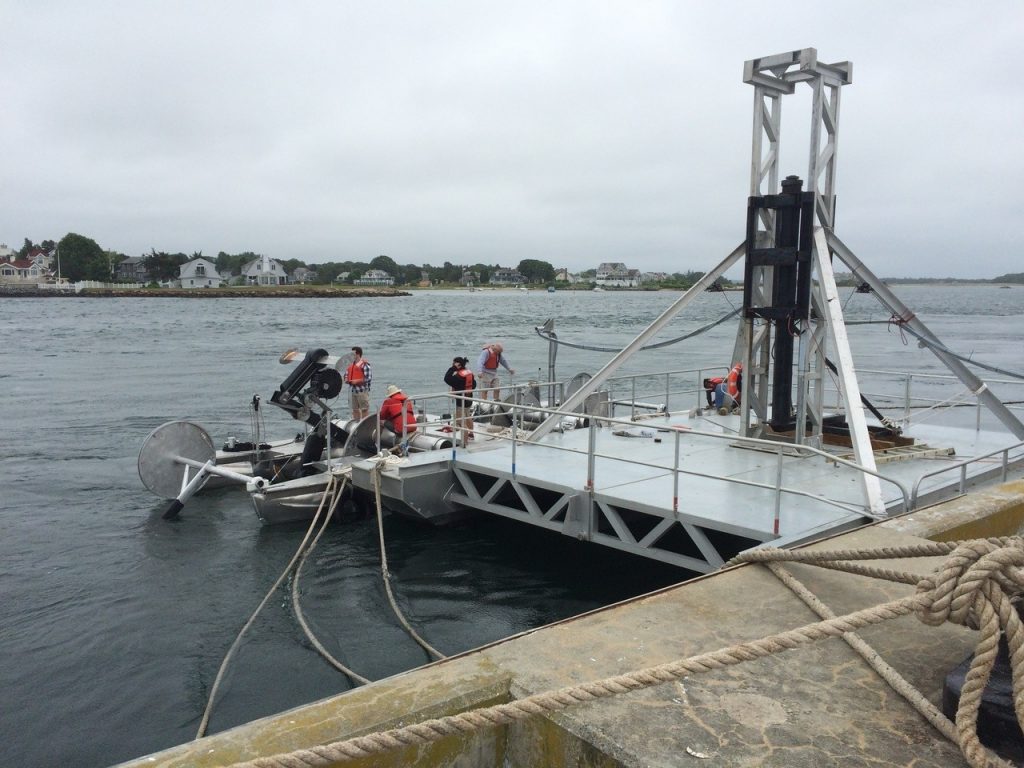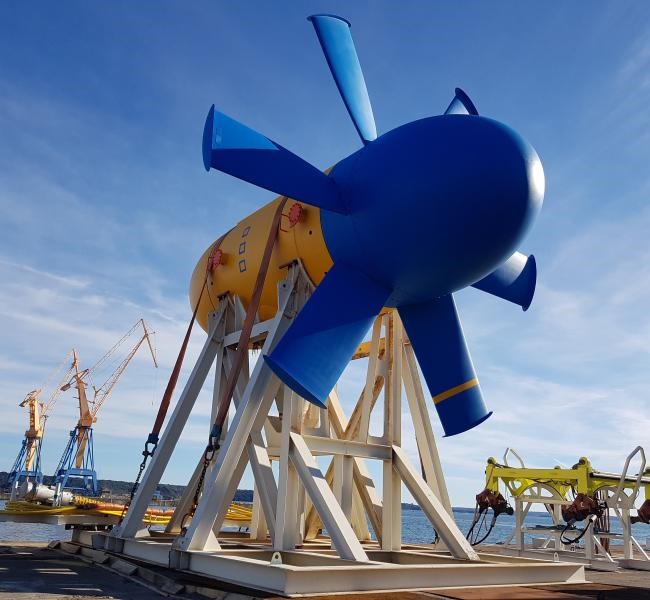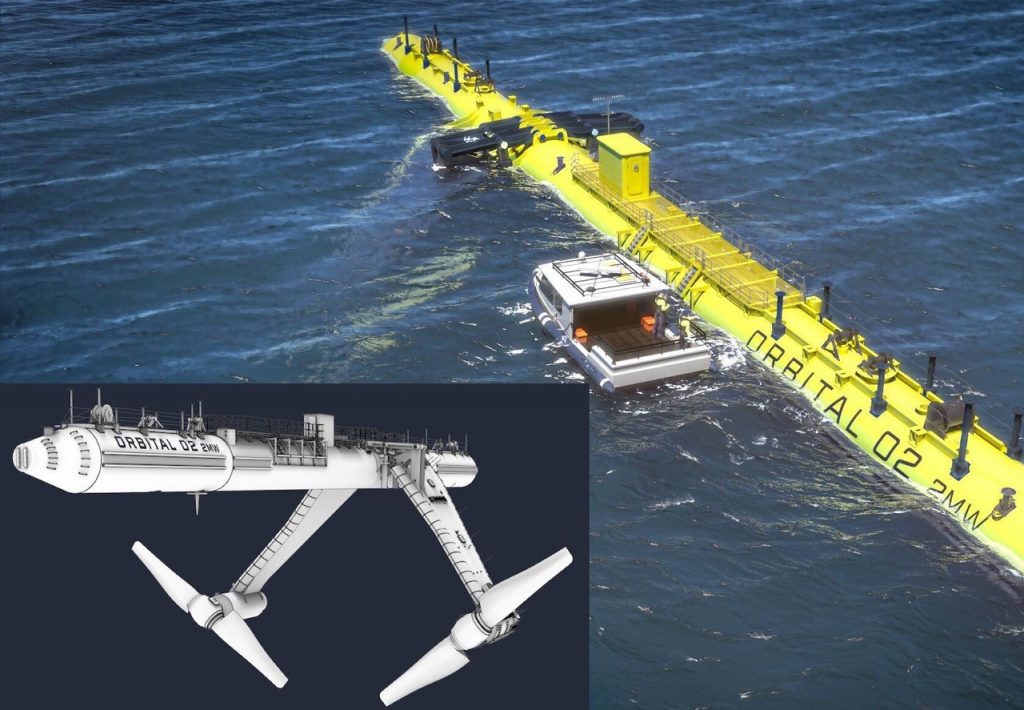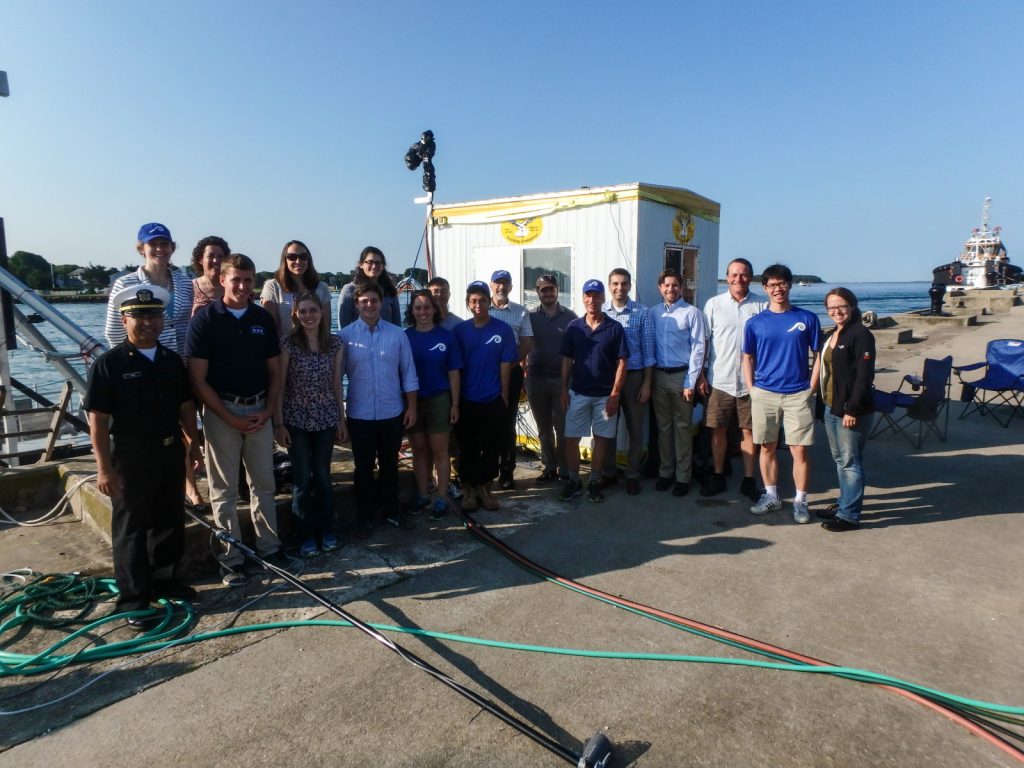Can we harness the power of the oceans?
Professor Jennifer Franck leads a team of mechanical engineers at the University of Wisconsin-Madison in the US who are working on a device that could turn the immense power of ocean tides into a sustainable electricity supply
TALK LIKE A MECHANICAL ENGINEER
RENEWABLE ENERGY – a source of energy that will never run out
LIFT – when fluid flows around an object, lift is a resulting force that is at right angles to the direction of the flow
MARINE ENERGY – energy derived from oceans and tides
TIDAL ZONES – narrow land constrictions that experience both high and low tides
OSCILLATE – to move back and forth in a regular rhythm
ROTATE – to move in a circular motion
Have you ever tried to stop the tide coming in at the beach by building your best sandcastle? If so, you will know how hard it is to halt the sea in its tracks. Twice a day, every day, the irresistible pull of the moon’s gravity forces the world’s oceans to rise – pouring up the beaches, rushing into inlets, crashing into cliffs – only to fall back down again.
Imagine you had the power of the tide at your fingertips. Imagine, at the flick of a switch, you could transform that surging water into electric energy for your phone, light for your living room, or heat to cook your dinner. This is the goal of Professor Jennifer Franck. As a mechanical engineer at the University of Wisconsin-Madison, she has been pioneering technology that could one day make our electricity supply more sustainable and more reliable.
WHERE DOES OUR ENERGY COME FROM?
These days, it is the power of fossils. Most of the energy used around the world (about 85% in 2020) comes from coal, oil and gas – all of which are the fossilised remnants of plants and animals that lived millions of years ago. However, these fossil fuels are not renewable, and their use is causing climate change through the release of carbon dioxide, so it is crucial that we shift to different sources of energy soon.
You may have spotted the white spinning blades of wind turbines on a hillside, or seen rooftops covered in black, shiny solar panels. These technologies turn the power of the wind and sun into electricity and are being built rapidly around the world. Together, they now make up around 5% of the US’s energy mix. Marine energy, on the other hand, is yet to make a big impact. It was not until 2008 that the first marine power plant was connected to the grid in Northern Ireland, and, since then, only a few more have appeared. Most technologies for capturing marine energy (including ocean currents and waves as well as tides) are still being developed by scientists and engineers such as Jennifer.
WHY USE MARINE ENERGY?
As wind and solar power technologies are becoming cheap and widely available, you might be wondering why we need marine energy at all. The wind and sun are both renewable, and capturing their energy does not release carbon dioxide into the atmosphere, so why bother developing new technology for the oceans where we have to deal with corrosive saltwater and challenging logistics of installation and maintenance? The answer is all about reliability and predictability.
Take a look outside: how is the weather? Is the sun shining? Is the wind blowing? Imagine you could only turn on your TV if it was windy enough to spin your local wind turbine! Now think about what the weather will be like tomorrow: will there be an overcast sky? What impact could thicker cloud cover have on solar energy output?
We need energy every day, but wind and solar rely on unpredictable weather conditions to work, so if we were to use only these sources, we would need to build up enormous energy reserves to maintain consistent supplies. Storing energy is not easy, which is why tidal power is appealing. Every 12 hours and 25 minutes, without fail, the tides go up and down, and it is this reliable tidal movement – and how fast the water moves between tidal zones – that makes all the difference.
Jennifer highlights the abundance of water sources on our planet. “Energy is contained in moving water, either from waves, from steady currents of water in tidal zones, in rivers or ocean currents offshore.” There is global demand for energy, and while people live in varying environments and climates, marine energy could be used all over the world.
Jennifer explains, “Moving water is available in many high-density locations (such as in rivers or tidal channels near big cities) and also remote locations (where island or Indigenous communities are not reliably connected to an electric grid).”
WHAT IS AN OSCILLATING HYDROFOIL?
The task for engineers like Jennifer is to find an efficient way to capture the movement of water. She explains, “Previous attempts operate on the same basic principles as wind turbines, but the problem is that rotational devices spin very fast, which can cause seaweed or fishing lines to get tangled in them and could have adverse effects on wildlife”.
Instead of a spinning machine, Jennifer and her team are working on a device that is driven by a clean and constant flow of water. “This oscillating motion is slower and more similar to the flapping motions of nature, such as a fish or marine mammal propelling itself through the water,” she explains.
The hydrofoil is the part of the device that rises and falls like the end of a seesaw as water flows past it. This is similar to how an aeroplane wing uses the horizontal movement of air to generate upwards lift. The hydrofoil has a surface which it fixes at an angle (known as the angle of attack) compared to the direction the water is flowing in, so that it is pushed up towards the surface. When it reaches the top of its oscillation, the hydrofoil switches its angle of attack so the flow of water now pushes it back down again, until it reaches the bottom, switches angle of attack again and repeats the cycle.
HOW CAN COMPUTERS HELP BUILD THE PERFECT SYSTEM?
Jennifer and her engineering collaborators have built prototypes and tested them in the lab and in the sea at Cape Cod Bay, Massachusetts. She explains, “Our experiments show the device can work for a wide range of tidal flow speeds in both directions.” However, a lot of the engineers’ work was done without needing to build anything at all.
Computers are vital because the physics equations that describe the motion of fluids like water are complicated and are usually impossible to solve by hand. Instead, the engineers build the equations into a simulation – essentially a computer game where the rules are the rules of physics – which the engineers then use to predict how much power they could generate from a certain design.
HOW ARE HYDROFOILS LIKE GEESE?
Have you ever wondered why some birds, such as geese, fly in a V-formation? They do this because the flapping of the front bird’s wing leaves a trail of little whirlpools behind it in the air. If the bird behind is positioned just right, it can pick up some extra lift from these whirlpools, thereby saving energy. Jennifer’s team has discovered that oscillating hydrofoils can work together in a similar way. By positioning one behind the other, the whirlpools created by the first one help to power the second.
Each little discovery like this gets us a little closer to that dream of clean, reliable energy from the oceans, and with the climate crisis as urgent as ever, it cannot come soon enough.
 PROFESSOR JENNIFER FRANCK
PROFESSOR JENNIFER FRANCK
Assistant Professor of Engineering Physics, University of Wisconsin-Madison, USA
FIELD OF RESEARCH: Aerospace and Mechanical Engineering
RESEARCH PROJECT: Developing an oscillating hydrofoil – a device to capture the energy of moving water
FUNDERS: US National Science Foundation (NSF), Advanced Research Projects Academy – Energy (ARPA-E)
This material is based upon work supported by the National Science Foundation under Grant No.1921594. Any opinions, findings, and conclusions or recommendations expressed in this material are those of the author(s) and do not necessarily reflect the views of the National Science Foundation.
ABOUT MECHANICAL ENGINEERING
If you have ever looked at a machine and wondered “how does it work?”, you know what excites mechanical engineers. From ships, planes and trains to human organs, animals, and robots, machines encompass literally anything that moves, and engineers are the people that design, build, test and maintain those machines. Engineers use physics to guide them but are never content with just theory. Instead, their goal is to see an idea through to a final working product.
WHY DO WE NEED MECHANICAL ENGINEERS?
Mechanical engineers keep our world moving! Their problem solving is behind the transport we use to get around, the energy and industries we rely on for food and materials, and many medical devices.
WHERE DOES AEROSPACE FIT IN?
Jennifer works in a physics engineering department, but she very much sees herself as a researcher in aerospace and mechanical engineering. She explains, “I consider aerospace a sub-set of mechanical engineering, as there is much overlap and collaboration between these disciplines in terms of university degrees and the jobs you obtain post-graduation.”
WHAT FACES THE NEXT GENERATION OF MECHANICAL ENGINEERS?
Climate change is the pressing issue of our time, and mechanical – and aerospace – engineers will play a crucial role in finding solutions. This could be by re-designing machines that rely on fossil fuels to work using electricity (such as cars), so we are ready for a future without coal, oil and gas. Alternatively, it might mean working on smarter ways to heat and cool our homes so that they use less energy. Mechanical engineers will also be required to work on ways to capture carbon from the atmosphere, technology to store energy and – like Jennifer – machines for generating energy sustainably.
Reference
https://doi.org/10.33424/FUTURUM307
EXPLORE A CAREER IN MECHANICAL ENGINEERING
• Take this online quiz to see if mechanical engineering is your thing, or if another kind of engineering might be more your ticket.
• Most engineers work in companies or government agencies. To get an idea of the wide range of job options, go to the Institution of Mechanical Engineers website.
• Visit ‘She’s an Engineer’ to learn about inspiring women in engineering and what they do in their jobs.
PATHWAY FROM SCHOOL TO MECHANICAL ENGINEERING
• The first step to becoming a mechanical engineer is usually an undergraduate degree, in which you will learn a mixture of physics, mathematics and computer science.
• Jennifer says, “It’s okay if you’re not an expert in all three of these subjects! I did not do very well in high school physics, but I really loved computer science and I did well in mathematics.”
• It is also possible to enter mechanical engineering through apprenticeships and college courses.
HOW DID JENNIFER BECOME A MECHANICAL AND AEROSPACE ENGINEER?
WHAT WERE YOUR INTERESTS WHEN YOU WERE GROWING UP?
I had a lot of interests, but I was primarily into sports, competing almost year-round in gymnastics and track and field. Looking back, I displayed engineering tendencies unintentionally – I was always dissecting a difficult skill in gymnastics, or hurdle or jump on the track, trying to figure out the mechanism to make it higher, faster, better. Diagnosing a problem and coming up with a more effective and efficient solution is exactly what engineers do every day.
WHAT INSPIRED YOU TO BECOME AN ENGINEER?
Thanks to my father, I was exposed to computers at an earlier age than most of my peers, and I was easily fascinated by them. I taught myself some very basic programming languages and took computer science in high school (I was the only female in the class). I also did well in math, and many people hinted to me that engineering may be a good idea, although I didn’t have a firm understanding of what the engineering field was.
When I entered my engineering programme at university, it took me a while to fully understand what engineers do and the numerous ways they contribute to society. Now, I tell aspiring engineering students that engineering is about problem-solving. You learn the tools, the mathematics, the physical concepts and the computer skills to design and build new and improved technology. It doesn’t sound very specific, but I think this is because engineering is all around us!
WHAT LED YOU TO SPECIALISING IN MARINE ENERGY?
A pivotal moment for me was the decision to pursue a PhD and attend graduate school. I attribute this to a professor I met during my junior year who became a great mentor and launched me on a path of research and computational fluid dynamics, which is what I still work on today.
WHAT ATTRIBUTES HAVE MADE YOU SUCCESSFUL AS AN ENGINEER?
One of the most important attributes is to remain persistent and positive. When you work on challenging problems, you don’t always have success, or success is small and incremental, so it can be difficult to keep going. What has helped me is having amazing colleagues and a network of people that I have met through my career.
HOW DO YOU SWITCH OFF FROM YOUR WORK?
I am fortunate to have a family – a husband and three daughters – to come home to every day after work, giving me a natural way to unplug and decompress at the end of each day. I look forward to setting my work aside and spending time with my family each evening and on weekends.
WHAT ARE YOUR PROUDEST CAREER ACHIEVEMENTS SO FAR?
As a professor, I am most proud of the students I have mentored and taught. That is the best part of my job since my impact goes beyond my research and engineering to influence and train another generation of engineers!
JENNIFER’S TOP TIPS
01 Work hard and keep your options open!
02 Don’t let one bad grade, one person’s opinion or one bad experience turn you away from a field, especially one as wide reaching as engineering.
03 Don’t be put off by old stereotypes. I personally look forward to seeing more young women in the aerospace and mechanical engineering fields. Women are natural problem solvers, and we need equitable representation in the field in order to solve the hard problems that lie ahead.
Do you have a question for Jennifer?
Write it in the comments box below and Jennifer will get back to you. (Remember, researchers are very busy people, so you may have to wait a few days.)


